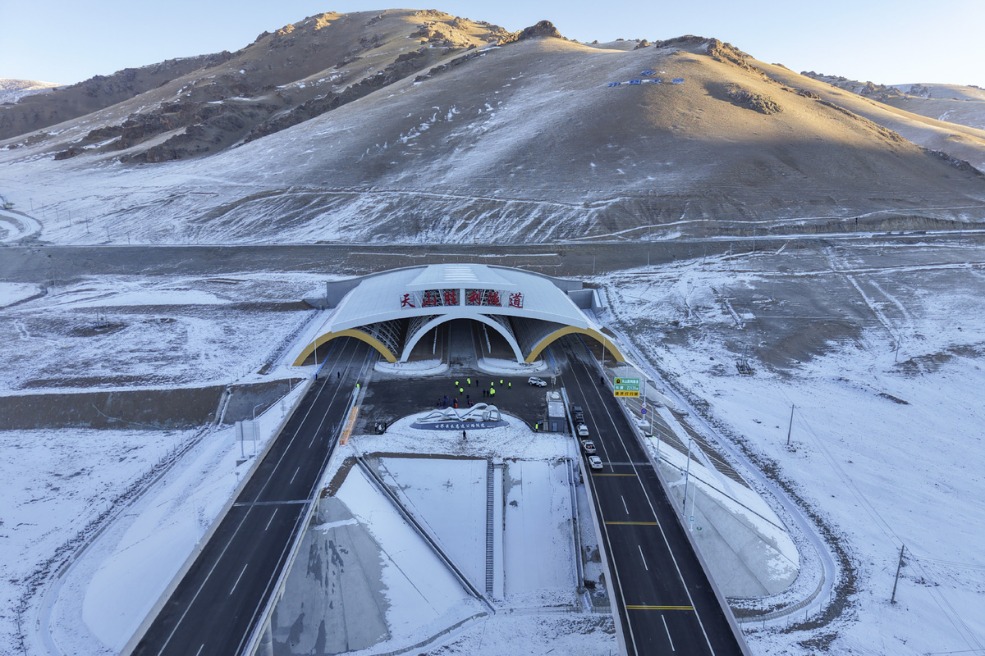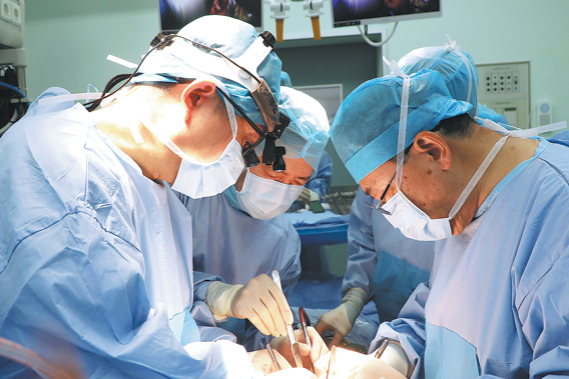Food for thought
Qiu Zhijie holds his calligraphy exhibition at an unusual venue to promote art in daily life, Deng Zhangyu reports.

When Zhu Zhengtian began his work at his stall in Sanyuanli food market in Beijing as usual on May 1, he was surprised to find that each of the eggs in his shop had a Chinese character written on it, and together they made up a poem.
"Very interesting! I never saw this before," says Zhu, a vendor who has worked in the market for 20 years, adding that the eggs quickly sold out at a much higher price than usual.
The labels on grain boxes at Zhu's stall also had calligraphy-style characters written with ink brushes.
There are dozens of calligraphy scrolls hung in the market as part of artist Qiu Zhijie's exhibition, titled To the People, Food Is the First Necessity. The market houses more than 100 stalls selling vegetables, fruit, meat, seafood and spices.
The show is a project to advocate art in daily life.
"A calligrapher should walk to the street to serve people. Chinese calligraphy should be used in daily life," says the show's curator, Zhang Weina, adding that they picked the market as an exhibition space instead of a museum to make art relevant to people's daily lives.
Qiu made hundreds of calligraphy pieces for the show in 10 days after visiting the market. He divided his works into three categories: pieces for daily use in the market, such as labels, banners and plaques, with information on food, shops and the market's rules; long scrolls of calligraphy to hang there, with the contents being poems about food by well-known poets, popular phrases on food and funny recipes; and installations.
In a meat stall, Qiu etched the Chinese characters for "sorry" into a long knife used for cutting bones. And the chopping board matched the knife that had a phrase written, "My heart pains when the knife cuts."
Qiu says: "I had many interesting ideas after visiting the market."
He etched into the wheels of a cart the question, "Who stands on the top of the food chain?" When the cart moves in waterlogged areas, the sentence will show.
Qiu has written many English words and sentences in ink on labels, banners and scrolls because the market sells food from across the world, attracting lots of expats living in Beijing.
The artist says it's not difficult for him because many of his works showed in museums overseas have English words he has written with ink brushes.
"I can write English words in ink in different styles by studying handwritten menus, billboards and banners," says Qiu.
His works include different art forms, such as paintings, installations, photos, videos and performances. Chinese characters and calligraphy are the usual subjects of his works.
The 52-year-old artist learned Chinese calligraphy when he was a little boy. He graduated from the printmaking department of the China Academy of Art in 1992. He was recognized by the art circle in China for his labor-intensive project of copying a fourth-century Chinese calligraphy work more than 4,000 times on the same paper over seven years. His art is regarded as a representative of experimental communication between the Chinese literati tradition and contemporary art.
"Chinese calligraphy's daily use can be seen in history. For example, a doctor wrote a prescription, and a poet wrote a letter to a friend," says Qiu, explaining his reason behind holding the exhibition in the food market.
He says in ancient China, people didn't display calligraphy works in museums. The art was found in buildings, because calligraphy pieces often hung on pillars, and intellectuals wrote calligraphy on fans.
To an extent, nature is the best place for Chinese calligraphy, Qiu says.
Many good calligraphy works from ancient times were found on rocks and cliffs of mountains. When Qiu was a teenager, he often went to mountainous areas with his calligraphy teacher to get rubbings from inscriptions on stones, which is a good model for learners to copy and practice.
"I think the best relationship between art and viewers is 'living in art'. But what we do is to build houses to lock art in," says Qiu, who is also director of the School of Experimental Art at the Central Academy of Fine Arts in Beijing.
He uses ink brushes in daily life. He writes in ink on his notebooks and work reports.
When he ended his interview with China Daily at the food market, Qiu was asked by a couple there to write Chinese characters on their aprons. The couple, who live in a community nearby, had just bought vegetables and eggs from the market. "That's real art for the people," the woman says.



Today's Top News
- Wang to meet foreign ministers of Cambodia, Thailand in Yunnan
- China's top legislature concludes standing committee session
- Thailand and Cambodia agree to temporary ceasefire
- NPC's 4th annual session slated for early March
- Civilizational links for a fairer world
- Manufacturing in China spurs global growth






























